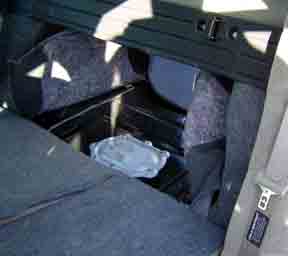
|
The fuel sender can be accessed from inside of the vehicle. This way you do not have to drop the tank. Remove the spare tire cover, jack and spare tire. Pull back the carpet.
|
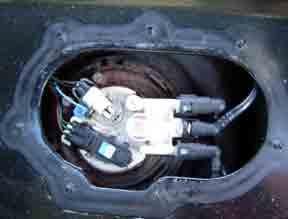
|
Remove the nuts from the fuel sender access panel. Disconnect the fuel tank pressure sensor and fuel sender electrical connectors. Clean the fuel pipes and sender assembly to prevent fuel contamination. Prior to disconnecting the fuel pipes, remove the gas cap to relieve pressure in the tank. Then connect the Fuel Pressure Gauge Fitting (J 34730-262) to the fuel pressure connection. Connect Fuel Pressure Gauge (J 34730-1A) to that. Wrap a shop towel around the connection to avoid spillage. Install the bleed hose and open the valve to bleed the system into an approved container. Disconnect the quick-connect fittings.
|
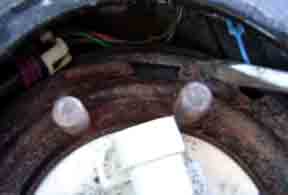
|
Remove the fuel sender retaining ring. The assembly will spring up when the ring is removed. Remove the modular fuel sender assembly. Clean all seating surfaces.
|
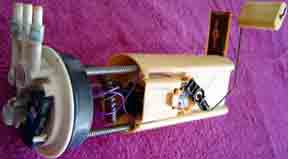
|
This is the modular fuel sender assembly.
|
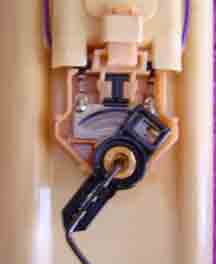
|
Fuel level sender switch.
|
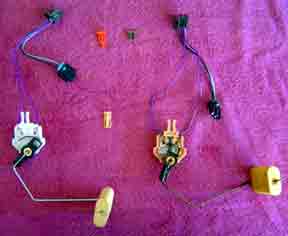
|
New fuel sender switch assembly (left) and old (right)
|
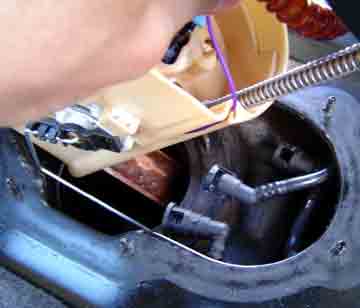
|
Re-assemble and reinstall. Connect the electrical connectors. Put a few drops of clean engine oil on the male end of the quick-disconnect fittings before connecting them. Reconnect the battery cable. Turn the ignition ON for two seconds, turn OFF for 10 seconds, turn ON and check for fuel leaks. Turn the igntion OFF and replace the access panel.
|






